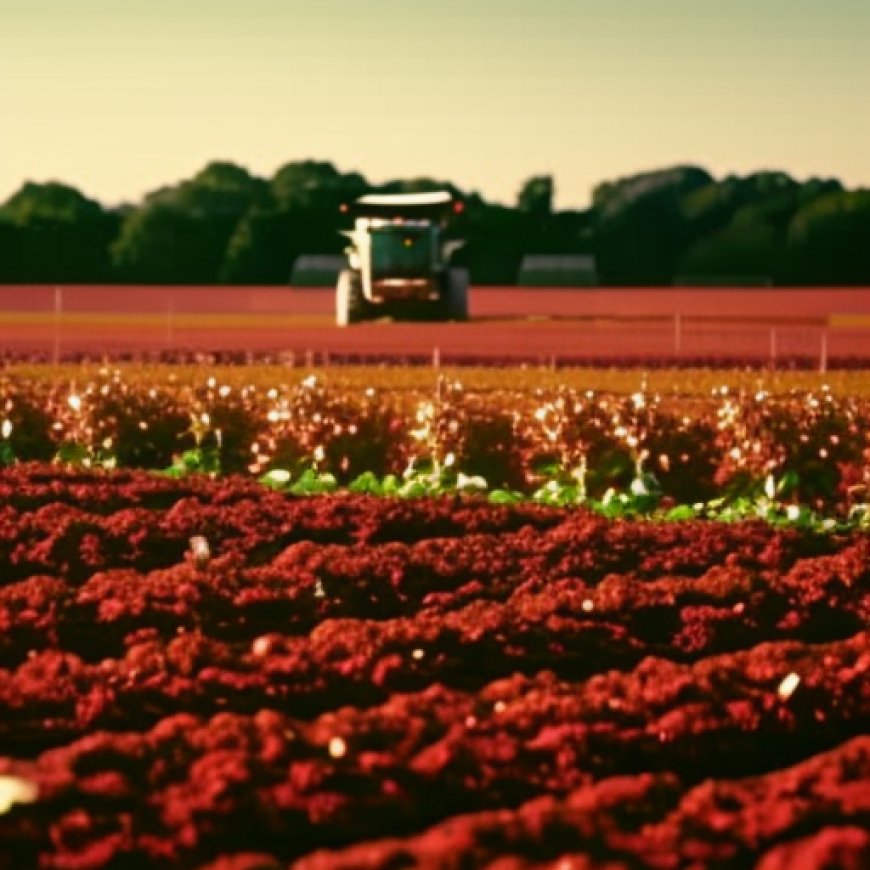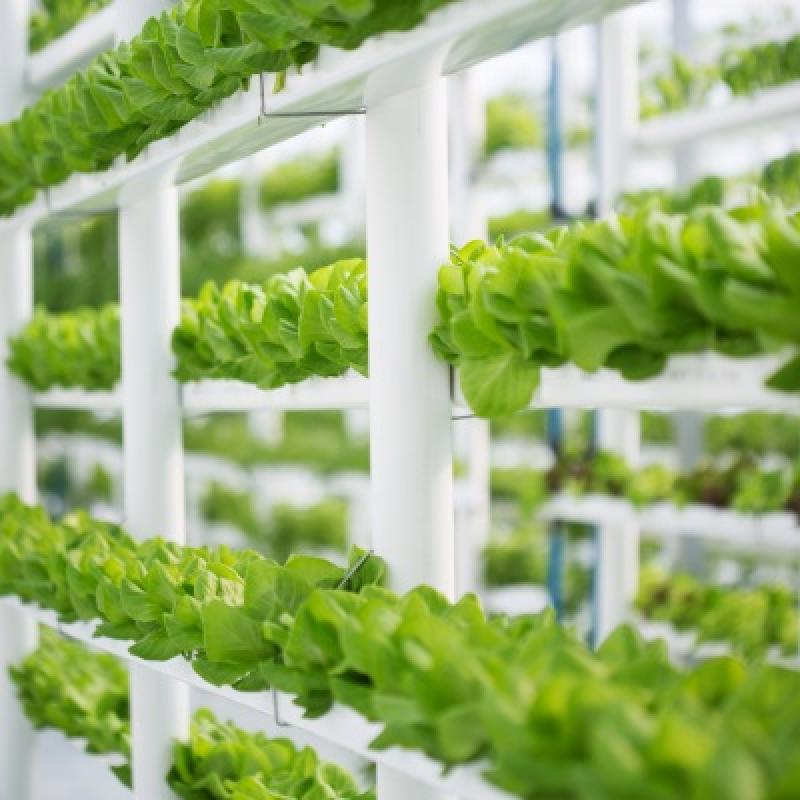Regenerative agriculture is a unique win-win opportunity for food and agriculture
Regenerative agriculture is a unique win-win opportunity for food ... Sustainable Biz Canada


How Regenerative Agriculture Supports Sustainable Development Goals

Introduction:
How our food is grown is crucial to everything we do. Good food contributes to good health, soil health, and economic activity. And at the same time, the way food is produced can make us susceptible to disease, degrade soil fertility, and increase environmental harms.
Regenerative Agriculture for Sustainable Development:
The realization that agriculture has a unique win-win opportunity to tackle global challenges like human health, carbon sequestration, and economic challenges is driving farmers and supply chains to adopt “regenerative agriculture” – a continuous improvement process of pragmatic farming practices that build soil health and resilience.
Regenerative agriculture incorporates the following practices:
- Cover cropping
- Diverse crop planting
- Reduced tillage
- Watershed protection
- Integrated livestock grazing
What makes regenerative agriculture unique is that it integrates these practices into a comprehensive cropland management operating system. Continual improvement results in improved yields, healthier crops, and higher profitability.
Similarities with Energy Management:
Regenerative agriculture shares many characteristics with energy management. Both operating systems have a comprehensive, proactive approach. Executives that adopt holistic energy management practices in their companies harvest rewards similar to regenerative farmers – cost savings, improved productivity, and higher profitability.
The Importance of Soil:
It’s easy to overlook the importance of what lies underneath our feet. North Americans take abundant food choices for granted. Yet, soil not only grows food, it filters and purifies water, reduces flooding, is the source of many medicines, and stores vast amounts of carbon. As one of the earth’s most biodiverse habitats, soil is truly our planet’s “living skin”.
The Threat to Soil Health:
That living skin, however, is being stressed and marred. Ninety per cent of conventionally farmed topsoil worldwide is being depleted. It can take nature up to 1,000 years to create three centimeters of topsoil. If we continue to lose soil 50- to 100-times faster than it can be replaced, we will also lose the ability, within our lifetime, to feed a growing human population.
Impact on Climate Change:
In Canada, agriculture is responsible for 10 per cent of Canada’s climate warming carbon dioxide emissions. The Intergovernmental Panel on Climate Change reports that agriculture, forestry, and other land use account for 23 per cent of total net anthropogenic greenhouse gas emissions worldwide.
However, soil stores an extraordinary quantity of carbon and is one of the largest natural carbon sinks. The world’s soils hold three times the amount of carbon found in the atmosphere and twice the carbon contained in all plants and trees. The photosynthesis process of removing carbon from the air and transferring it into the ground can make the way we grow our food a critical climate solution.
Businesses and Regenerative Agriculture:
Companies are paying attention to regenerative agriculture, too. Over 70 per cent of agri-business Scope 3 carbon emissions come from farming activities, and climate-related events in recent years have disrupted their global supply chains.
Maple Leaf Foods is an industry leader that has made ambitious regenerative agriculture commitments to strengthen their climate positive supply chain, amongst a growing peer network of agrifood businesses establishing similar goals.
Triple Bottom Line Benefits:
Regenerative agriculture has true triple bottom line benefits:
People:
Nutritious food is highly linked to positive health outcomes. Yet nutrients in our topsoil have been depleted to the point that we are literally, “dirt poor.” Crops grown decades ago were richer in vitamins and minerals than the varieties most of us get today. Regenerative agriculture can help reverse that troubling trend.
Planet:
Soils host a great reservoir of biodiversity. Twenty-five per cent of animal species on Earth live underground. Healthy soil habitats support thousands of species of fungi, bacteria, and invertebrates, which work collaboratively, out of sight, in support of global carbon, nitrogen, and water cycles. Soil is one of the world’s biggest natural carbon sinks. Regenerative agriculture in the United States has the potential to sequester about 650 million metric tons of carbon dioxide every year, offsetting up to 11 per cent of U.S. greenhouse gas emissions annually.
Profit:
The cost of farm inputs and equipment has skyrocketed, putting intense pressure on farmers’ livelihoods. Regenerative agriculture can improve the profitability of farms by more than 50 per cent. Farmers report that contending with fewer weeds and pests, combined with natural nutrient cycling, result in lower synthetic inputs. Crop yields are more likely to be sustained, even in periods of drought or heavy rainfall. There are also carbon offset markets that can provide supplementary incomes for participating farmers.
Conclusion:
Regenerative agriculture is making both consumers and producers much more aware of the importance of soil and soil health. Soil is connected to almost everything that humans do. How well we farm is foundational to our wellbeing. Restoring the fertility and diversity of the Earth’s soils must succeed. We can no longer take for granted the foundation of our wellbeing – the soils that lie beneath our feet, and the people that work those soils to provide us with the nutritious food we eat.
To learn more about regenerative agriculture, please tune into the 360 Energy podcast episode #88 with special guest Dipesh Mistry, COO of Vayda. The episode explores the market for climate-friendly agriculture, uncovering the economic and environmental incentives for farmers to embrace sustainable practices.
SDGs, Targets, and Indicators
1. Which SDGs are addressed or connected to the issues highlighted in the article?
- SDG 2: Zero Hunger
- SDG 3: Good Health and Well-being
- SDG 6: Clean Water and Sanitation
- SDG 7: Affordable and Clean Energy
- SDG 8: Decent Work and Economic Growth
- SDG 12: Responsible Consumption and Production
- SDG 13: Climate Action
- SDG 15: Life on Land
2. What specific targets under those SDGs can be identified based on the article’s content?
- SDG 2.4: By 2030, ensure sustainable food production systems and implement resilient agricultural practices that increase productivity and production, that help maintain ecosystems, that strengthen capacity for adaptation to climate change, extreme weather, drought, flooding, and other disasters, and that progressively improve land and soil quality.
- SDG 3.9: By 2030, substantially reduce the number of deaths and illnesses from hazardous chemicals and air, water, and soil pollution and contamination.
- SDG 6.6: By 2020, protect and restore water-related ecosystems, including mountains, forests, wetlands, rivers, aquifers, and lakes.
- SDG 7.2: By 2030, increase substantially the share of renewable energy in the global energy mix.
- SDG 8.4: Improve progressively, through 2030, global resource efficiency in consumption and production and endeavor to decouple economic growth from environmental degradation.
- SDG 12.4: By 2020, achieve the environmentally sound management of chemicals and all wastes throughout their life cycle, in accordance with agreed international frameworks, and significantly reduce their release to air, water, and soil to minimize their adverse impacts on human health and the environment.
- SDG 13.2: Integrate climate change measures into national policies, strategies, and planning.
- SDG 15.3: By 2030, combat desertification, restore degraded land and soil, including land affected by desertification, drought, and floods, and strive to achieve a land degradation-neutral world.
3. Are there any indicators mentioned or implied in the article that can be used to measure progress towards the identified targets?
- Indicator for SDG 2.4: Adoption of sustainable agricultural practices such as regenerative agriculture.
- Indicator for SDG 3.9: Reduction in illnesses related to soil pollution and contamination.
- Indicator for SDG 6.6: Restoration of water-related ecosystems, including soil health improvement.
- Indicator for SDG 7.2: Increase in the share of renewable energy used in agricultural practices.
- Indicator for SDG 8.4: Improvement in resource efficiency in agriculture and reduction in environmental degradation caused by farming practices.
- Indicator for SDG 12.4: Implementation of environmentally sound management practices in agriculture to minimize the release of harmful chemicals to air, water, and soil.
- Indicator for SDG 13.2: Integration of climate change adaptation and mitigation measures in agricultural policies and practices.
- Indicator for SDG 15.3: Restoration of degraded land and improvement in soil quality through regenerative agriculture.
Table: SDGs, Targets, and Indicators
| SDGs | Targets | Indicators |
|---|---|---|
| SDG 2: Zero Hunger | 2.4: By 2030, ensure sustainable food production systems and implement resilient agricultural practices that increase productivity and production, that help maintain ecosystems, that strengthen capacity for adaptation to climate change, extreme weather, drought, flooding, and other disasters, and that progressively improve land and soil quality. | Adoption of sustainable agricultural practices such as regenerative agriculture. |
| SDG 3: Good Health and Well-being | 3.9: By 2030, substantially reduce the number of deaths and illnesses from hazardous chemicals and air, water, and soil pollution and contamination. | Reduction in illnesses related to soil pollution and contamination. |
| SDG 6: Clean Water and Sanitation | 6.6: By 2020, protect and restore water-related ecosystems, including mountains, forests, wetlands, rivers, aquifers, and lakes. | Restoration of water-related ecosystems, including soil health improvement. |
| SDG 7: Affordable and Clean Energy | 7.2: By 2030, increase substantially the share of renewable energy in the global energy mix. | Increase in the share of renewable energy used in agricultural practices. |
| SDG 8: Decent Work and Economic Growth | 8.4: Improve progressively, through 2030, global resource efficiency in consumption and production and endeavor to decouple economic growth from environmental degradation. | Improvement in resource efficiency in agriculture and reduction in environmental degradation caused by farming practices. |
| SDG 12: Responsible Consumption and Production | 12.4: By 2020, achieve the environmentally sound management of chemicals and all wastes throughout their life cycle, in accordance with agreed international frameworks, and significantly reduce their release to air, water, and soil to minimize their adverse impacts on human health and the environment. | Implementation of environmentally sound management practices in agriculture to minimize the release of harmful chemicals to air, water, and soil. |
| SDG 13: Climate Action | 13.2: Integrate climate change measures into national policies, strategies, and planning. | Integration of climate change adaptation and mitigation measures in agricultural policies and practices. |
| SD
Behold! This splendid article springs forth from the wellspring of knowledge, shaped by a wondrous proprietary AI technology that delved into a vast ocean of data, illuminating the path towards the Sustainable Development Goals. Remember that all rights are reserved by SDG Investors LLC, empowering us to champion progress together. Source: sustainablebiz.ca
Join us, as fellow seekers of change, on a transformative journey at https://sdgtalks.ai/welcome, where you can become a member and actively contribute to shaping a brighter future.
|








